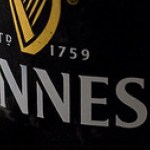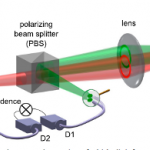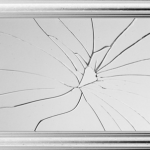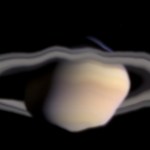Quantum Physics
time for all new linkedy links here at the new digs
Quantum Frontiers - a new blog from the Institute for Quantum Information and Matter, with kickoff by John Preskill hisself.
Question of the day: explain quantum mechanics in five words
My attempt: Probability Amplitudes, Observables don't Commute
Good to know John still does khakis and chalk, but we gots to know: does he still have the diet pepsi?
Took me years to break the habit... not that I was overly impressionable as a tender young grad turkey taking QFT or anything.
Subtleties of the Crappy Job Market - for Scientists, that is.…
The positive and sometimes unexpected impact of particle physics is well documented, from physicists inventing the World Wide Web to engineering the technology underlying life-saving magnetic resonance imaging (MRI) devices. But sometimes the raw power of huge experiments and scientific ambition draw the recognition of those seeking only the most extreme and impractical achievements on Earth.
Brookhaven National Laboratory’s Relativistic Heavy Ion Collider (RHIC) smashes particles together to recreate the incredible conditions that only existed at the dawn of time. The 2.4-mile…
In which we do a little ResearchBlogging, taking a look at a slightly confusing paper putting a new twist on the double-slit experiment.
------------
I'm off to California this afternoon, spending the rest of the week at DAMOP in Pasadena (not presenting this year, just hanging out to see the coolest new stuff in Atomic, Molecular, and Optical Physics). I don't want to leave the blog with just a cute-kid video for the whole week, though, so here's some had-core physics: a new paper in the Proceedings of the National Academy of Sciences (freely available online), looking at a new sort of…
Imagine looking in the mirror and finding your familiar face reflected back as you've always known it. But as you look more closely, as you precisely examine that mirror image, subtle distortions emerge. The glass itself remains flawless, but real and fundamental differences exist between you and the face that lives on the other side of the looking glass.
Something similar happens in the quantum world when matter is examined against its exotic reflection: antimatter. The analogy is admittedly fanciful, but it's no more dramatic than the dynamics of these almost-twins, which annihilate one…
The first of the five categories of active research at DAMOP that I described in yesterday's post is "Ultracold Matter." The starting point for this category of research is laser cooling to get a gas of atoms down to microkelvin temperatures (that is, a few millionths of a degree above absolute zero. Evaporative cooling can then be used to bring the atoms down to nanokelvin temperatures, reaching the regime of "quantum degeneracy." This is, very roughly speaking, the point where the quantum wavelength of the atoms becomes comparable to the spacing between atoms in the gas, at which point the…
Josh Rosenau has a post about the supernatural, spinning off recent posts about a recent Calamities of Nature webcomic. Josh makes a point that I think is valid but subtle:
The issue with the supernatural is not whether it's part of the universe, but whether it is bound by the same laws as all the other elements of the universe. The bizarre claim about ghosts is that they somehow obey some laws but not others, for no obvious reasons.
Something supernatural could, in principle, interact with the universe sometimes but not at others. If it is operating outside of natural laws, that doesn't…
"All things move and nothing remains still" -- Heraclitus
The history of astronomy can be read as a story of better and better vision. Over the centuries, we have supplemented our vision with technology that allows us to see further and more clearly; while Ancient astronomers, who relied only on their naked eyes to perceive the universe, managed to make star catalogues and predict comets, Galileo, pressing his to a telescope, saw all the way to the moons of Jupiter.
Optical telescopes and the human eye are fundamentally limited; early astronomers were forced to gaze into telescopes for…
Several people blogged about a new measurement of gravitational states of neutrons done by physicists using ultracold neutrons from the Institut Laue-Langevin in France. I had to resort to Twitter to get access to the paper (we don't get Nature Physics here, and it's way faster than Inter-Library Loan), but this is a nice topic for a ResearchBlogging post, in the now-standard Q&A form:
OK, why was this worth begging people on Twitter to send you a copy? The paper is a demonstration of a sort of spectroscopy of neutrons bouncing in a gravitational field. They showed they could drive…
Two papers in one post this time out. One of these was brought to my attention by Joerg Heber, the other I was reminded of when checking some information for last week's mathematical post on photons. They fit extremely well together though, and both relate to the photon correlation stuff I was talking about last week.
OK, what's the deal with these? These are two papers, one recent Optics Express paper from a week or so ago, the other a Nature article from a few years back. The Nature paper includes the graph you see at right, which is a really nice dataset demonstrating the Hanbury Brown and…
I'm a big fan of review articles. For those not in academic science, "review article" means a long (tens of pages) paper collecting together the important results of some field of science, and presenting an overview of the whole thing. These vary somewhat in just how specific they are-- some deal with both experiment and theory, others just theoretical approaches-- and some are more readable than others, but typically, they're written in a way that somebody from outside the field can understand.
These are a great boon to lazy authors, or authors facing tight page limits ("Ref. [1] and…
A reader emailed me with a few questions regarding How to Teach Physics to Your Dog, one of which is too good not to turn into a blog post:
What is a photon from an experimental perspective?... Could you perhaps provide me with a reference that discusses some experiments and these definitional issues?
The short form of the experimental answer is "A photon is the smallest amount of light that will cause a detector to 'click.'" (For some reason, hypothetical light detector technology has never really advanced past the Geiger counter stage-- even though it's all electrical pulses these days, we…
There's some good stuff in yesterday's post asking what physics you'd like to read more about. I'm nursing a sore neck and shoulder, so I'll only do one or two quick ones today, starting with James D. Miller in the first comment:
1) Is it true that our understanding of quantum physics comes from studying systems with only a small number of particles and there is a good chance our theories won't hold in more complex systems.
It all depends on how you define your terms-- what counts as a "small number" of particles, and what counts as not holding?
It's certainly true that most of the…
The big physics story at the moment is probably the new measurement of the size of the proton, which is reported in this Nature paper (which does not seem to be on the arxiv, alas). This is kind of a hybrid of nuclear and atomic physics, as it's a spectroscopic measurement of a quasi-atom involving an exotic particle produced in an accelerator. In a technical sense, it's a really impressive piece of work, and as a bonus, the result is surprising.
This is worth a little explanation, in the usual Q&A format.
So, what did they do to measure the size of a proton? Can you get rulers that small…
A press release from Harvard caught my eye last week, announcing results from Markus Greiner's group that were, according to the release, published in Science. The press release seems to have gotten the date wrong, though-- the article didn't appear in Science last week. It is, however, available on the arxiv, so you get the ResearchBlogging for the free version a few days before you can pay an exorbitant amount to read it in the journal.
The title of the paper is "Probing the Superfluid to Mott Insulator Transition at the Single Atom Level," which is kind of a lot of jargon. The key image is…
Since I was going to be down here anyway to sign books at the World Science Festival Street Fair, Kate and I decided to catch one of the Saturday events at the Festival. It was hard to choose, but we opted for the program on Hidden Dimensions: Exploring Hyperspace (Live coverage was here, but the video is off), because it was a physics-based topic, and because I wrote a guest-blog post on the topic for them.
(No, we didn't go to the controversial "Science and Faith" panel, opting instead to have a very nice Caribbean dinner at Negril Village, just around the corner. I'll take excellent…
Blame Bryan O'Sullivan for this-- after his comment about misreading "Bohmian Mechanics" as "Bohemian Mechanics," I couldn't get this silly idea out of my head. And this is the result.
I like to think that this was Brian May's first draft (he does have a Ph.D. in astrophysics, after all), before Freddie Mercury got hold of it:
Is this the real life?
Is this just fantasy?
Do objects have real states
Or just probabilities?
Open your eyes
Look up to the skies and see
Studying quantum (poor boy), I need no sympathy
Because I'm easy come, easy go
A little psi, little rho
No interpretation ever…
I get asked my opinion of Bohmian mechanics a fair bit, despite the fact that I know very little about it. This came up again recently, so I got some suggested reading from Matt Leifer, on the grounds that I ought to learn something about it if I'm going to keep being asked about it. One of his links led to the Bohmian Mechanics collaboration, where they helpfully provide a page of pre-prints that you can download. Among these was a link to the Bohmian Mechanics entry in the Stanford Encyclopedia of Philosophy, which seemed like a good place to start as it would be a) free, and b) aimed at a…
We're just over 600 votes in the Laser Smackdown poll in honor of the 50th anniversary of the laser, as of early Friday morning. I notice that it has moved off the front page of the blog, though, so here's another signal-boosting repost, just so we have as many votes as possible, to establish maximum scientific validity when we declare the winner the Most Amazing Laser Application of All Time
Which of the following is the most amazing application of a laser?Market Research
Voting will remain open until next Sunday, May 2, just two days from now, with the ultimate winner announced on Monday…
What's the application? An optical frequency comb is a short-duration pulsed laser whose output can be viewed as a regularly spaced series of different frequencies. If the pulses are short enough, this can span the entire visible spectrum, giving a "comb" of colored lines on a traditional spectrometer. This can be used for a wide variety of applications, from precision time standards to molecular spectroscopy to astronomy.
What problem(s) is it the solution to? 1) "How do I compare this optical frequency standard to a microwave frequency standard?" 2) "How do I calibrate my spectrometer well…
Via Twitter, Michael Barton is looking for some good books about physics. I was Twitter-less for a few days around the period of his request, and this is a more-than-140-characters topic if ever there was one, so I'm turning it into a blog post.
The reason for the request is that he's going to be working as an intern at the Einstein exhibit when it visits Portland, which makes this a little tricky, as relativity is not an area I've read a lot of popular books in (yet-- that's changing). That will make this a little more sparse than it might be in some other fields.
There's also an essential…



